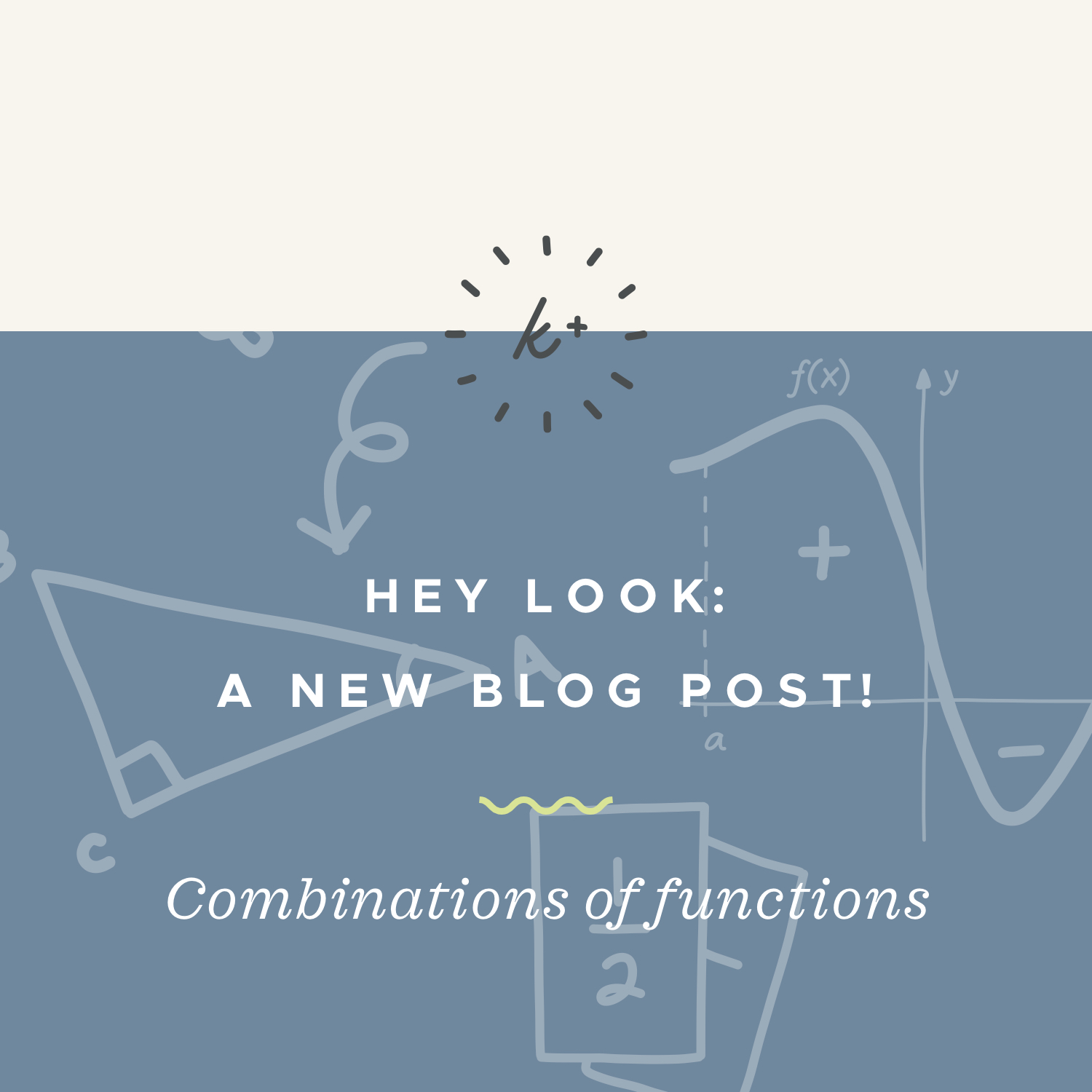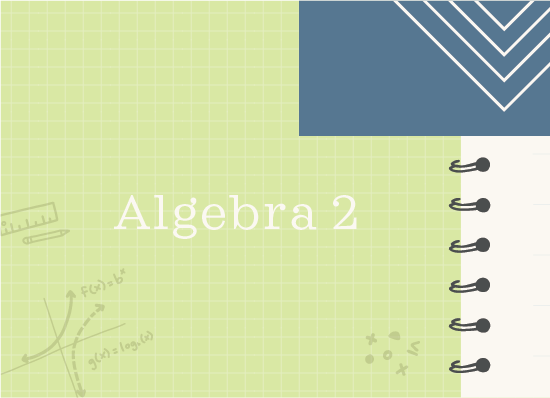Combinations of functions
Combinations as the sum, difference, product, or quotient of two functions
In this lesson you’ll learn how to transform functions by using combination notation.
Let’s say you have two functions, (we’ll call them ???f(x)??? and ???g(x)??? since those seem to be the most commonly used), then you can perform addition, subtraction, multiplication and division between the two functions.
Hi! I'm krista.
I create online courses to help you rock your math class. Read more.
When you perform these operations between ???f(x)??? and ???g(x)??? then the new function is called a combination. Let’s look at each operation and how it’s written for a function combination.
Sum ???(f+g)(x)=f(x)+g(x)???
Difference ???(f-g)(x)=f(x)-g(x)???
Product ???(f\cdot g)(x)=f(x) \cdot g(x)???
Quotient ???(f\div g)(x)=\frac{f(x)}{g(x)}???
When you find any of these combination functions, the order always matters. If the ???f??? comes first, then you need to start with ???f(x)???; if the ???g??? comes first, then you need to start with ???g(x)???.
Also we will look at composite functions in the next section and they can look very similar to the product. Look closely here to be sure you see the difference.
Product ???(f\cdot g)(x)=f(x) \cdot g(x)???
Composite ???(f \circ g)(x)=f(g(x))???
See the difference? There’s a big difference in meaning between an open circle and a closed circle for combinations of functions.
How to find combinations of functions
Take the course
Want to learn more about Algebra 2? I have a step-by-step course for that. :)
Finding the difference of functions
Example
Find ???(f-g)(x)???.
???f(x)=3x^2+2x-4???
???g(x)=x^2-3x+2???
The combination ???(f-g)(x)??? means the same thing as ???f(x)-g(x)???, so we can find the difference.
???f(x)-g(x)=3x^2+2x-4-(x^2-3x+2)???
???f(x)-g(x)=3x^2+2x-4-x^2+3x-2???
???f(x)-g(x)=3x^2-x^2+2x+3x-4-2???
???f(x)-g(x)=2x^2+5x-6???
???(f-g)(x)=2x^2+5x-6???
How about addition?
Finding the sum of functions
Example
Find ???(f+g)(x)???.
???f(x)=3x-4???
???g(x)=3x^2+5x+3???
Remember that ???(f+g)(x)??? is the same thing as ???f(x)+g(x)???, therefore
???(f+g)(x)=3x-4+3x^2+5x+3???
???(f+g)(x)=3x^2+3x+5x-4+3???
???(f+g)(x)=3x^2+8x-1???
When you find any of these combination functions, the order always matters.
It’s possible to use other variables besides ???f??? and ???g??? for the function names. Let’s use some different function names for the product.
Finding the product of functions
Example
Find ???(h\cdot m)(x)???.
???h(x)=4x-3???
???m(x)=-3x^2-1???
The combination ???(h\cdot m)(x)??? is the same as ???h(x)\cdot m(x)???, therefore,
???h(x)\cdot m(x)=(4x-3)(-3x^2-1)???
We can find this product using the FOIL method.
???h(x)\cdot m(x)=-12x^3+9x^2-4x+3???
???(h \cdot m )(x)=-12x^3+9x^2-4x+3???
Now let’s try a problem where we find the quotient.
Finding the quotient of functions
Example
Find ???(b \div w)(x)???.
???w(x)=2x???
???b(x)=3???
Remember ???(b \div w)(x)??? means the same thing as ???b(x)/w(x)???, therefore
???(b \div w)(x)=\frac{3}{2x}???






